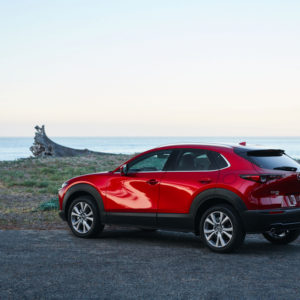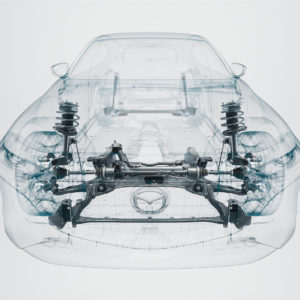If you’ve been a fan of Mazda vehicles for quite some time, then you probably know that every model has a great track record in terms of reliability regardless of their trim. There are, however, some models that perform better than the others, with one of them being the Mazda CX-30 Turbo.
But as great as they come, CX-30 Turbos can develop problems down the road.
A Thing or Two About the CX-30’s Turbo
There are a lot of things to love about the Mazda CX-30. Aside from the crossover SUV’s responsive steering and impressive handling, its powerful engine is another feat that drivers get to enjoy.

Designed to enhance the CX-30’s overall performance, the 2.5 Turbo engine is anything but weak. The turbo system uses an innovative cylinder head and process for the exhaust, as well as a high compression ratio to improve fuel efficiency and response and generate a low-end torque.
The CX-30’s turbo is definitely smaller than a normal turbo. However, the Japanese automaker made sure that dynamic engine power wouldn’t be left out when it downsized the turbocharger. Expect powerful acceleration from the CX-30 Turbo, specifically 250 horsepower and 320 lb-ft. of torque.
Most turbocharged engines are expected to consume more fuel than naturally aspirated ones. And while the CX-30 Turbo is no exception, driving it will only result in a single mile per gallon reduction in combined EPA fuel economy in comparison to the naturally aspirated SKYACTIV-G 2.5L engine.
Mazda CX-30 Turbo Reliability
Reliability ratings for the Mazda CX-30 continue to soar over the years, with the 2024 CX-30 earning a 9.1 out of 10.0 score from US News. This is a huge leap from the 2023 rating of 8.6 out of 10.0.
Turbo trims are quite popular across many CX-30 versions. Unfortunately, there are no Mazda CX-30 Turbo reliability ratings for 2023. This was the year when the 2.5 Turbo trim was discontinued.
In 2024, however, the Turbo option was reintroduced. The 2024 CX-30 was offered with a 2.5 Carbon Turbo trim as a base turbo model.
Mazda CX-30 Turbo Problems
Owning a Mazda CX-30 Turbo means you get to go on a series of fun and exhilarating drives. But as enjoyable as it is to drive one, a CX-30 Turbo can come with its own set of problems.
Excessive Oil Consumption
Excessive oil consumption has been a common issue in some CX-30 Turbos. According to some of the affected owners, a faulty valve stem seal is partly to blame.
The valve stem seal controls the amount of oil that passes through the valve guide to ensure proper lubrication and prevent catalytic converter damage. It also prevents excessive oil consumption.
Unfortunately, valve stem seals aren’t spared from regular wear and tear. Over time, the high-strength rubber on these seals can crack or break. Improper installation can also cause these seals to wear prematurely.
Once the valve stem seal wears out, carbon buildup can form within the valve seat and guide, eventually causing oil to contaminate the engine’s cylinders. Usually this will show up as smoke at idle or a large amount of white smoke when you start the engine after a short hot soak.
Worn-Out Cylinder Head
The cylinder head controls the flow of air and fuel within the cylinders. It plays an important part in a vehicle’s combustion process, working closely with the head gasket to create a tight seal around the cylinders.
Design flaws can result in a cracked cylinder head, but an overheated engine is arguably the most common cause of such cracks.
If an engine has overheated once, it’s highly likely that the cylinder head has already developed some cracks along its surface due to thermal stress.
Issues with the cylinder head can also manifest in symptoms like poor engine performance, oil leaks, decreased coolant levels, and smoke coming out from under the hood.
Faulty Rear Differential
The rear differential is a gearbox that connects to the driveshaft and transfers torque to the wheels while letting them rotate at different speeds.
A fully operational rear diff is crucial when turning and maintaining road traction. When there’s a problem with the rear diff, maintaining vehicle control and stability becomes an issue, too.
Bad driving habits and improper maintenance can lead to problems in the rear diff, including the following:
- Grinding, howling, or clicking noises when turning
- Excessive vibrations
- Steering difficulties
- Oil leaks
- Premature tire wear
Mazda CX-30 Years to Avoid
Although the Mazda CX-30 is patronized by many, some model years didn’t live up to drivers’ expectations. Here are some redesigns to avoid if you’re planning to get a CX-30 anytime soon.
2021 Mazda CX-30
The 2021 Mazda CX-30 is arguably one of the most problematic redesigns ever produced.
Engine issues like excessive oil consumption and battery problems have been tagged as some of the most common problems reported by many 2021 CX-30 owners. The 2021 model also has two existing recalls.
Other minor problems reported for this model include wiper-related issues and a warped windshield.
2020 Mazda CX-30
The CX-30 debuted in 2019, but it wasn’t until 2020 that the crossover SUV made its way to the US. Unfortunately, 2020 was not a good year for the CX-30 as it came with a couple of issues that several owners were unhappy about.
The 2020 model year has three recalls for various issues surrounding the brakes, fuel delivery, and hatchback operation. There have also been some reports about the model’s premature battery failure and malfunctioning dashboard warning lights.
Avoid Costly Repairs with Proper CX-30 Maintenance
If you’re lucky enough to get a CX-30 that came without issues, the smartest thing to do would be to keep it that way with proper maintenance.
Poor driving habits and maintenance upkeep are the most common reasons why a lot of drivers end up with their vehicles stuck in the repair shop with stacks of expensive receipts.
Tasks like getting an oil change, rotating tires, and flushing the transmission are extremely important if you want to keep your CX-30 around for a long time.
Make sure you’re not skimping on your CX-30’s preventive maintenance checklist to avoid unwanted trips to the repair shop.
Where to Get Replacement Parts for Your Mazda CX-30
The Mazda CX-30 Turbo might have high reliability ratings, but it won’t last long if you don’t resolve issues like excessive oil consumption and worn-out cylinder heads as soon as possible. If left unchecked, your engine is likely to suffer, leading to costly repairs down the line. The good news is that fixing common Mazda CX-30 Turbo problems doesn’t have to be hard. Thanks to CarParts.com, ordering replacement parts for your Mazda CX-30 is now a breeze.
We’re dedicated to giving our customers a pleasant shopping experience from start to finish, so you can enjoy a website that’s easy to navigate. Our vehicle selector and search filters make browsing through our catalog of Mazda CX-30 parts and accessories quick and convenient. We also guarantee fast shipping. If you order by 12 p.m. ET, you can also expect your new parts to arrive in as fast as two business days.
Don’t wait until various systems of your Mazda CX-30 start acting up before replacing any faulty parts. Check out our catalog of high-quality Mazda CX-30 parts and accessories and replace malfunctioning parts today!
Any information provided on this Website is for informational purposes only and is not intended to replace consultation with a professional mechanic. The accuracy and timeliness of the information may change from the time of publication.




















